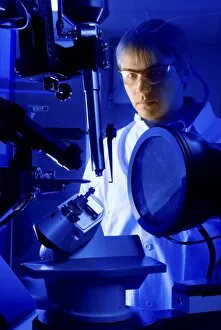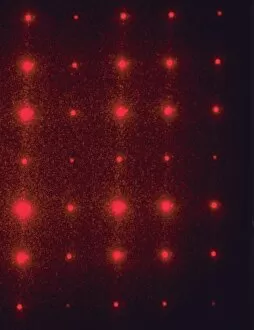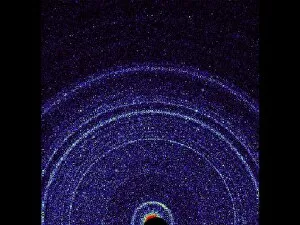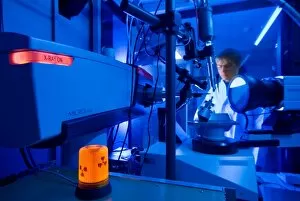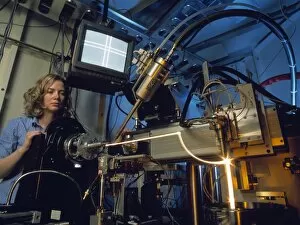X Ray Diffraction Collection
"Unveiling the Hidden Structures: Exploring X-ray Diffraction in Protein Crystallography" X-ray diffraction, a powerful technique in the field of crystallography
For sale as Licensed Images
Choose your image, Select your licence and Download the media
"Unveiling the Hidden Structures: Exploring X-ray Diffraction in Protein Crystallography" X-ray diffraction, a powerful technique in the field of crystallography, has revolutionized our understanding of complex structures at the atomic level. One fascinating application is its use in studying Lysozome protein crystals, shedding light on their intricate arrangements and functions. The roots of this groundbreaking method can be traced back to British physicist William Lawrence Bragg. His pioneering work laid the foundation for X-ray crystallography C016 / 3824, enabling scientists to decipher diffraction grating patterns and unravel hidden secrets within crystalline materials. Beyond Earth's boundaries, even Mars couldn't escape the curiosity surrounding X-ray diffraction. The Curiosity rover's Martian soil analysis (C015 / 6510) utilized this technique to uncover valuable insights about our neighboring planet's geological composition. From Ribgrass mosaic virus computer models to Bluetongue virus core proteins, X-ray crystallography C016 / 3823 continues to play an instrumental role in visualizing these microscopic wonders. By capturing detailed images through diffraction patterns, researchers gain vital knowledge about their structure and function. Protein crystallography research takes center stage as scientists harness X-ray diffraction capabilities to delve into the mysteries of life-sustaining molecules. This cutting-edge approach allows us to explore how proteins fold into unique shapes and interact with other biomolecules—an essential step towards developing targeted therapies for various diseases. Intricate yet awe-inspiring, x-ray diffraction offers a glimpse into nature's architectural marvels at an atomic scale. As we continue pushing boundaries with this remarkable tool, new frontiers await discovery—ushering us deeper into the realm of protein crystallography and unlocking endless possibilities for scientific advancement.

